Beyond Reading and Spelling: How Dyslexia Affects Your Student’s Life

When we think of dyslexia, reading and spelling difficulties often come to mind first. However, dyslexia’s impact extends far beyond these academic challenges. Dyslexic children also often face challenges following instructions, managing their time effectively, and organizing their thoughts–life issues they may likely have to contend with throughout their lives. Let’s dive into how dyslexia influences life skills, social development, and everyday experiences and explore practical strategies to support your child.
Understanding Dyslexia
Definition and Overview
Dyslexia is a neurodevelopmental disorder that primarily affects reading and writing skills. It’s not about intelligence; rather, it’s about how the brain processes language. Many people mistakenly believe that dyslexia is simply about reversing letters, but it’s much more complex. Dyslexia can manifest in various ways, including difficulties with phonological processing, whole-word reversals, advanced phonics, decoding, and fluency. These challenges can make it hard for children to recognize words, spell correctly, and read with ease.
Learn more:
Academic Challenges Beyond Reading and Spelling
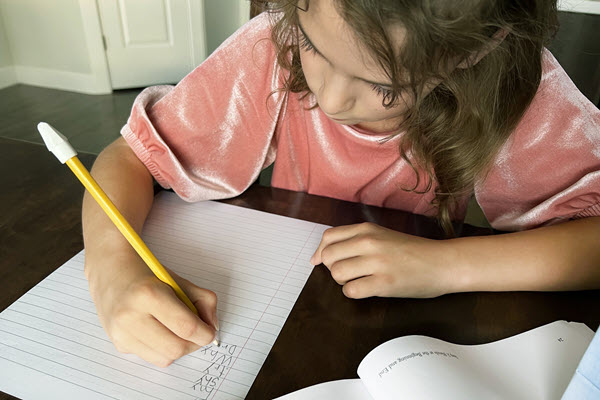
Impact on Writing Skills
Children with dyslexia often face difficulties with spelling, grammar, and organizing their thoughts on paper. Many of our customers tell us how their children can tell the most imaginative stories verbally, but when it comes to writing them down, they struggle to get their ideas across.
Supporting students with dyslexia in their writing endeavors can be transformative. Experimenting with assistive technology, such as voice-to-text tools, allows students to express their ideas more freely without the barriers of traditional writing. Another effective teaching strategy we recommend is scribing, or partnership writing, in which an adult writes down the student’s spoken thoughts, which the student then copies into their own handwriting. This process can be broken up over multiple days if needed, allowing students to experience the internal “hearing” of their own thoughts as they write. These strategies not only improve their writing skills but also boost their confidence and academic success.
Mathematical Challenges
Math can present additional hurdles for children with dyslexia. Dyslexia can make word problems, sequencing, and remembering mathematical facts particularly challenging. While some students excel at understanding math concepts, they may struggle with word problems because of the reading component. To support these students, use manipulatives and incorporate multisensory approaches to teach math concepts, reinforcing learning through regular practice and repetition.
Social and Emotional Impact
Self-Esteem and Confidence
Academic struggles can take a toll on a child’s self-esteem. They might feel less capable than their peers, leading to frustration and low confidence. Celebrating small victories and focusing on their strengths can make a big difference. Positive reinforcement and encouragement can help build a child’s confidence and resilience. It’s important for parents and teachers—and especially parent-teachers—to recognize and celebrate the unique strengths and talents of children with dyslexia.

Social Interactions
Dyslexia can also affect social skills, as some children find it hard to pick up on social cues or engage in conversations. Encouraging group activities and role-playing social scenarios can help them build these skills. Social skills training and peer support groups can provide a safe space for children to practice and develop their social interactions. Building strong social connections can enhance a child’s overall well-being and sense of belonging.
Everyday Life Skills
Time Management and Organization Skills
Managing time and staying organized can be particularly challenging for children with dyslexia, and these difficulties often persist into adulthood. Teaching time management and organizational skills early on can set the foundation for future success, enabling children to navigate both academic and personal challenges more effectively.
Here are some strategies to help your child develop essential life skills that will benefit them beyond the classroom. The goal for all the strategies on the following list is to teach children to do these things on their own in time, encouraging the transition from doing it for your child to teaching them to do it themselves.
- Create a Visual Calendar: A visual calendar can be a powerful tool for children with dyslexia. Use color-coded sections for different subjects, activities, and tasks. This visual representation helps them see their schedule at a glance and understand what needs to be done and when. Including pictures or stickers can make the calendar even more accessible and engaging.
- Break Tasks into Manageable Steps: Large tasks can be overwhelming, so breaking them down into smaller, more manageable steps can make them more approachable. For example, if a child has a project due, break it down into steps like researching, outlining, drafting, and revising. This not only makes the task seem less daunting but also provides a clear roadmap to follow.
- Use Checklists and To-Do Lists: Checklists and to-do lists can help children keep track of their tasks and feel a sense of accomplishment as they check off completed items. Encourage them to prioritize tasks by importance and deadline, which can help them manage their time more effectively.
- Set Timers and Alarms: Timers and alarms can be useful for managing time during tasks. For instance, setting a timer for 20 minutes of focused work followed by a 5-minute break can help maintain concentration and prevent burnout. Alarms can also remind children of upcoming tasks or transitions between activities.
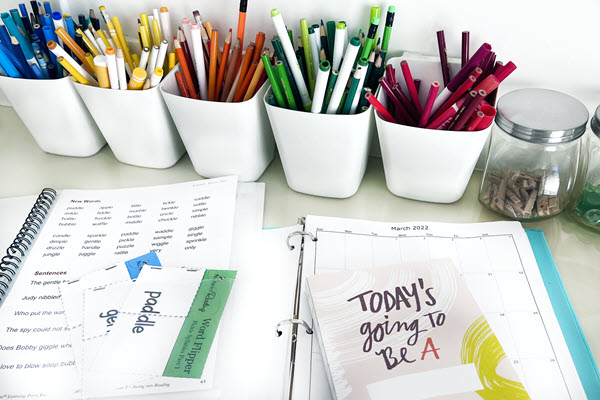
- Organize Materials and Workspace: A clutter-free and well-organized workspace can significantly improve focus and productivity. Provide storage solutions like bins, folders, and shelves to keep materials organized. Labeling these storage areas can help children quickly find what they need and put things away properly.
- Teach Time Management Skills: Teaching children how to estimate how long tasks will take and how to allocate their time effectively is crucial. Help them practice this skill by timing different activities and discussing how to plan their day. Over time, they will develop a better sense of how to manage their time independently.
- Encourage Routine and Consistency: Establishing a consistent daily routine can help children with dyslexia feel more secure and in control. Consistent wake-up times, meal times, and study periods create a predictable structure that can reduce anxiety and improve time management.
Short-term and Working Memory Skills
Children with dyslexia often face difficulties with short-term and working memory, which can impact their ability to follow multistep instructions, retain information, and stay organized. These memory challenges can make traditional learning methods less effective. However, the Orton–Gillingham approach we use in our All About Reading and All About Spelling curricula offers a structured and supportive way to address these issues.
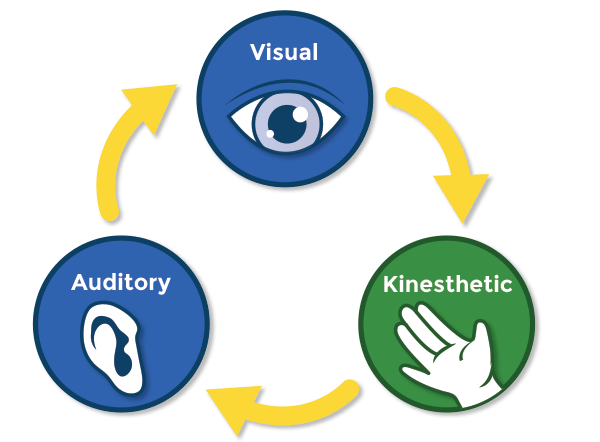
Widely recognized as the best way to teach children with dyslexia, the Orton-Gillingham model emphasizes simplified, focused learning that is sequential and mastery-based, and uses multisensory instruction. This sight, sound, and touch multisensory engagement helps strengthen memory by creating multiple pathways in the brain for information retrieval.
Read more:
Directionality and Coordination
Some children with dyslexia struggle to distinguish left from right, which can affect navigation and physical coordination. Simple activities like playing directional games or using a compass can improve these skills.
Leveraging Strengths and Advantages
Creative and Outside-the-Box Thinking
Many students with dyslexia excel in creative thinking and problem-solving. They often see connections that others might miss. Encouraging creative activities like drawing, building, or storytelling can help them shine. These activities can provide an outlet for self-expression and boost children’s confidence. Recognizing and nurturing these strengths can help children with dyslexia feel valued and capable.
Famous individuals with dyslexia, such as Steve Jobs, Agatha Christie, Leonardo da Vinci, Richard Branson, and Steven Speilberg have demonstrated extraordinary creativity and innovation. Sharing stories of these successful figures can inspire your child and show them that dyslexia can be a source of unique strengths and talents.
Building Resilience
Overcoming the challenges of dyslexia can build resilience and determination. Discussing the trials and accomplishments of successful individuals with dyslexia can inspire your child and show them that they can achieve great things too. Role models and mentors who have navigated similar challenges can provide valuable guidance and motivation. Building resilience is a lifelong skill that will help children face future obstacles with confidence.
Practical Strategies for Homeschooling Parents
Creating a Supportive Learning Environment
Fostering a positive and encouraging atmosphere is key to successful homeschooling. Here are some detailed strategies to help you create an optimal learning environment:
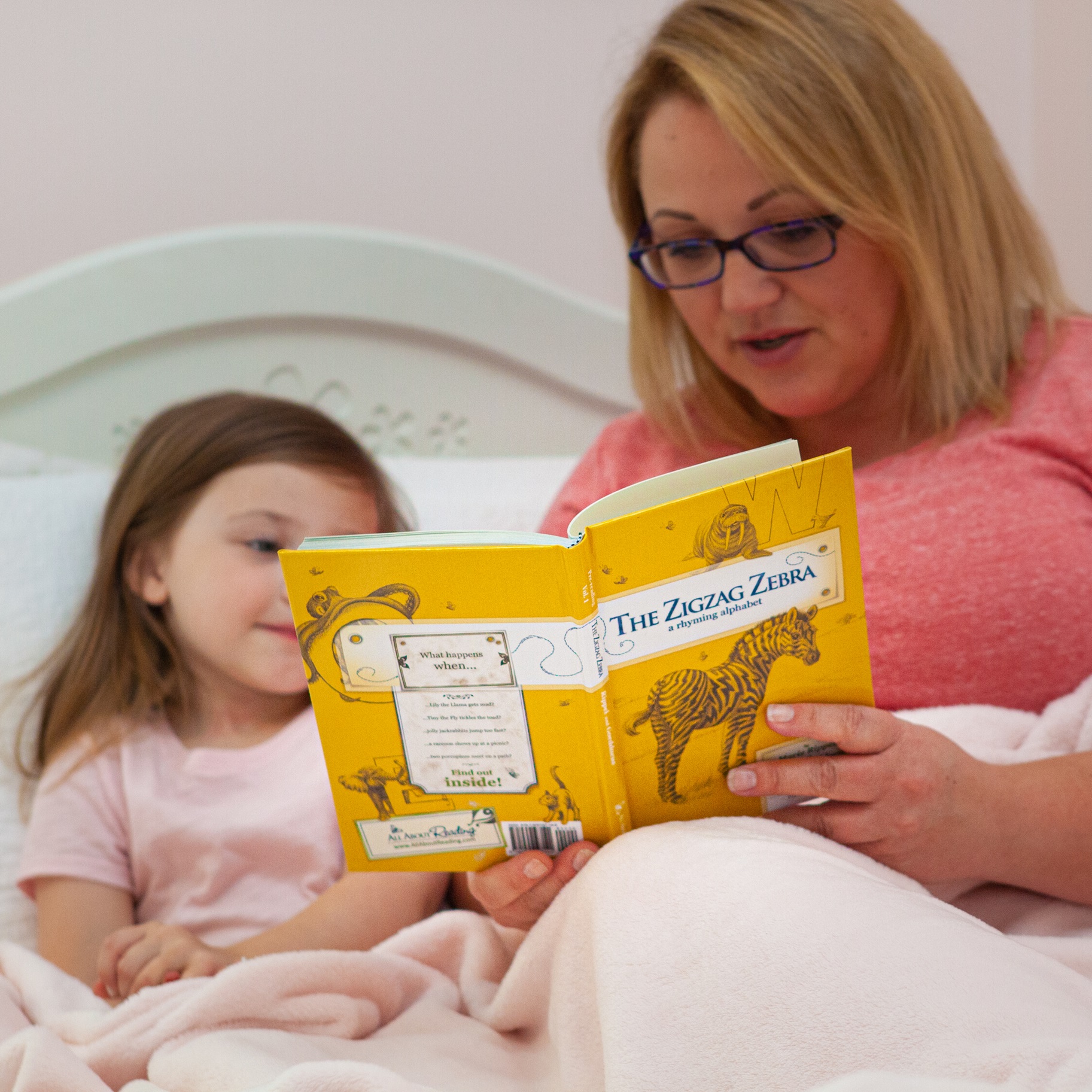
- Establish a Routine: Consistency is crucial for children. Set a daily schedule that includes specific times for different subjects, breaks, and extracurricular activities. This helps children know what to expect and can reduce their anxiety.
- Provide a Quiet Study Space: Designate a specific area in your home for learning. This space should be free from distractions and equipped with all necessary supplies. A quiet, organized environment can help your child focus better.
- Be Patient and Understanding: Every child learns at their own pace. Be patient and provide encouragement, especially when they encounter difficulties. Celebrate their progress, no matter how small, to boost their confidence.
- Incorporate Breaks and Physical Activity: Regular breaks and physical activity are essential for maintaining concentration and overall well-being. Include short breaks between lessons and encourage activities like stretching, walking, or playing outside.
You’re Not Alone: Finding Support and Resources
As a parent of a child with dyslexia, it’s important to remember that you are not alone. Many parents face similar challenges, and a wealth of support is available. Seek information and resources on our site and online to better understand dyslexia and effective teaching strategies. Knowledge is power, and the more you understand, the better you can support your child.
We would also encourage you to join social media groups (including our Facebook Support Group) and online forums where you can connect with other homeschooling parents, share experiences, and gain valuable insights. Don’t hesitate to talk to friends and family for support and encouragement for yourself and for your child.
Additionally, you are always welcome to contact us. We have deep knowledge and experience with dyslexia and our award-winning curricula are considered a top choice for homeschooling and tutoring students with dyslexia. We are also here to support you on your teaching journey with us and to help you be the best possible teacher for your child.
Conclusion
Dyslexia affects many aspects of a child’s life, but with the right support and strategies, they can overcome these challenges and succeed. Focus on their strengths, celebrate their efforts, and provide a nurturing environment. Remember, you’re not alone on this journey—there are plenty of resources and support available to help you and your child.
Explore more:




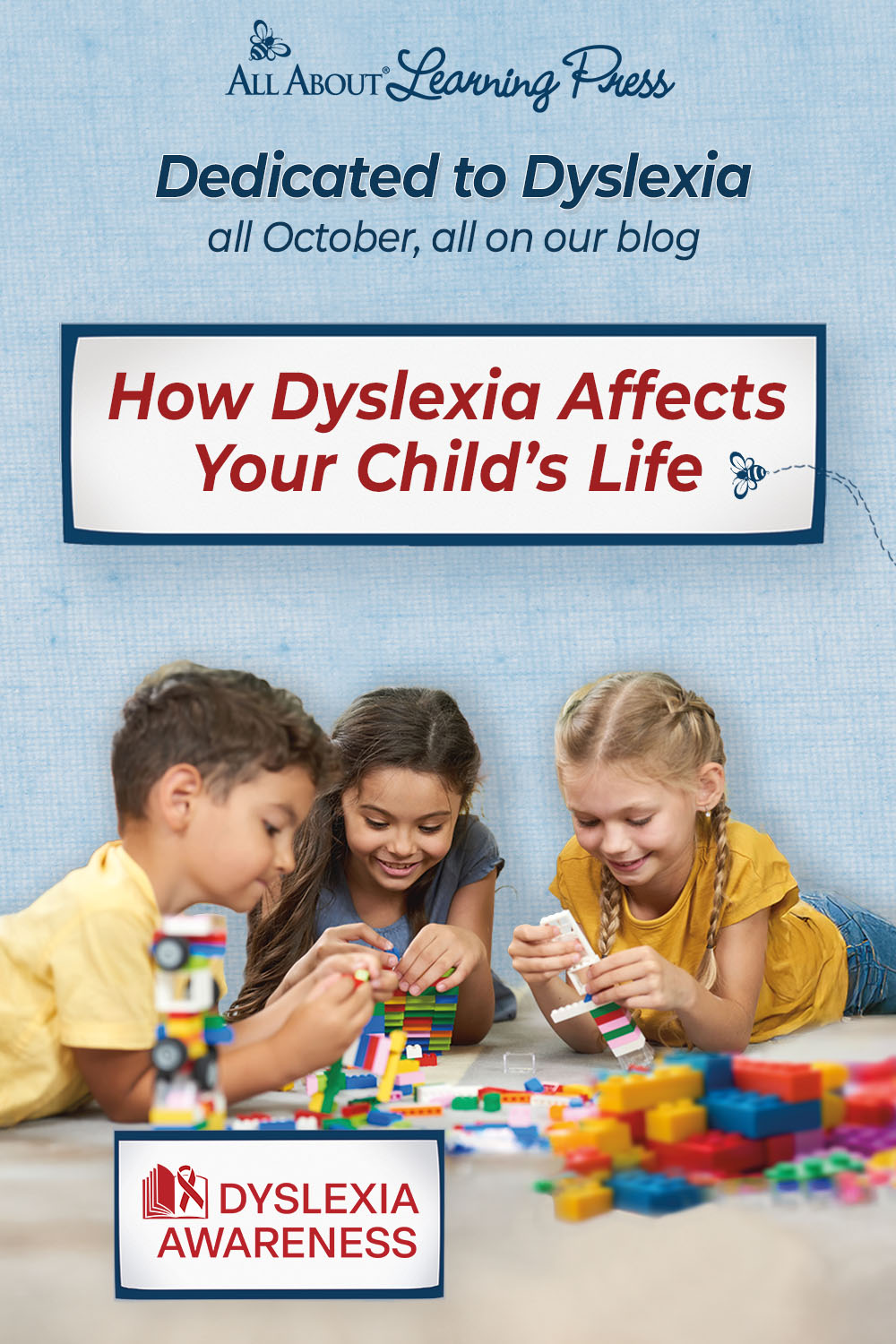






Jessica Gonsalves
says:Thank you so much for sharing these tips!
Robin
says: Customer ServiceYou’re welcome, Jessica!
Kate
says:Thank you for sharing, so helpful in understanding more about my kiddo!
Robin
says: Customer ServiceYou’re welcome, Kate. I’m glad this is helpful!
Margaret
says:Really this is so helpful gives me peace of mind enjoy to teach more and more
Robin
says: Customer ServiceMargaret,
I’m glad this gives you peace! That is so important as a teacher.
Dianilka
says:After reading this article, I’m totally convinced about yout vocation to help kids learn how to read. Thanks for the insights on this important topic of Dyslexia and it affects a student’s life.
Robin
says: Customer ServiceThank you, Dianilka! We are dedicated to helping parents and tutors help students with dyslexia and other learning disabilities!
Brea Fortney
says:So interesting and important to be aware of!
Robin
says: Customer ServiceYes, so true, Brea!
CrickeeElegance
says:Have you ever considered that dyslexia could be a misunderstood gift rather than a learning disability? How can we shift our perspective to better support individuals with dyslexia in reaching their full potential?”,
“refusal
Kaitlyn
says:Great article with some practical tips!
Robin
says: Customer ServiceThank you, Kaitlyn!
Donna Edwards
says:I am thankful for the information.
Robin
says: Customer ServiceYou’re welcome, Donna.
Chris
says:Great blog post about dyslexia with resources to explore.
Robin
says: Customer ServiceThank you, Chris.
Nicole
says:I’m so happy to get these articles on dyslexia. Thank you for sharing.
Robin
says: Customer ServiceYou’re welcome, Nicole! I’m glad these articles are helpful.
Victoria chavez
says:Wow, thank you so much for this information! In honor of dyslexia awareness month, this is such a great post that really goes in depth of everything dyslexia entails and how to best understand our children. Thank you so much for this. I have a 9 year old daughter who is dyslexic and I appreciate this information so much!
Robin
says: Customer ServiceYou’re so welcome, Victoria! I’m glad this is helpful and useful for you.
Amber Booth
says:We have been loving AAR level one. I finally found a program that I feel my child is actually learning and retaining the info.
Robin
says: Customer ServiceSo great to hear that All About Reading Level 1 is working for you, Amber!
Gina
says:We are on Level 2 this year. My daughter who has dyslexia has grown leaps and bounds with this program! She is feeling for once that she can actually read.
Robin
says: Customer ServiceGina,
I’m so happy to hear that your daughter is finally feeling some confidence in learning to read! That’s so important!
Rachel
says:Thank you for this resource!! Just started aar level 1 with my recently diagnosed kindergartner!
Robin
says: Customer ServiceYou’re welcome, Rachel. Let me know if you have questions or concerns or need anything. We’re always happy to help!
Sam
says:Great info!
Robin
says: Customer ServiceThank you, Sam!
Angela
says:Do you have some examples of the visual calendar?
Robin
says: Customer ServiceAngela,
Good question!
By “visual calendar,” we mean calendar that shows the student what will be happening each day with color-coded blocks and/or stickers to make time management easier to understand.
There are digital options such as the Skylight Calendar that allow you to display color-coded agendas for each family member. Or you could get paper planners. There are all kinds of options, such as Erin Condren Academic planners or Well Planned Gal Student Planner and tons of other choices. Or you can get a simple weekly agenda form that you print each week and fill in. It could even be an old-school hanging calendar that has big enough boxes for adding things to.
If your child is young or really struggling with time skills, you’ll need to fill in the calendar, display it somewhere that it is seen multiple times a day (or just keep it open on the school table in front of everyone), and refer your child to it often. In time, you can transition your child to filling it out with help. The ultimate goal is for the student to take over managing his or her own calendar and time, but that can be a process of many years. Be sure to get your child’s opinions and insights into the style and method that applies best. This will help ensure your child is more engaged with the system you set up.
Angela
says:Thanks for the explanation of the visual planner idea.
Robin
says: Customer ServiceYou’re welcome, Angela!